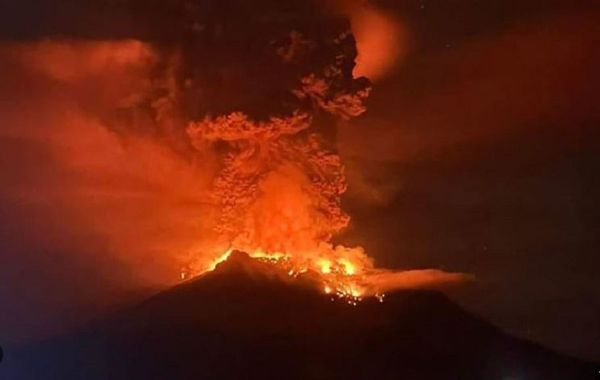
The observations in the exoplanet called WASP-39, reveals patchy clouds, an intriguing chemical reaction in its atmosphere, and hints about its formation.
According to NASA, the latest data also gives a hint of how these clouds might look up close: broken up rather than a single, uniform blanket over the planet.
The new readings from Webb provide a full menu of atoms, molecules, and even signs of active chemistry and clouds, according to a press release by NASA.
The exoplanet WASP-39b orbits a star in the constellation Virgo. In August, Webb detected the signs of carbon dioxide in the atmosphere of the planet outside our solar system.
The gas giant is about one-third the mass of Jupiter and more similar in composition to Saturn (a planet about as massive as Saturn but in an orbit tighter than Mercury).
"We observed the exoplanet with multiple instruments that, together, provide a broad swath of the infrared spectrum and a panoply of chemical fingerprints inaccessible until [this mission]," said Natalie Batalha, an astronomer at the University of California, Santa Cruz was quoted saying in the press release. Ms Batalha contributed to and helped coordinate the new research. "Data like these are a game changer."
The astronomers used three of their instruments. They were able to observe light from the planet's star as it filtered through WASP-39b's atmosphere, a process known as transmission spectroscopy, reported Nature.com.
The team of more than 300 astronomers were allowed to detect water, carbon monoxide, sodium, potassium and more in the planet's atmosphere, in addition to carbon dioxide.
Observations on Exoplanet
The planet’s proximity to its host star – eight times closer than Mercury is to our Sun – also makes it a laboratory for studying the effects of radiation from host stars on exoplanets. Better knowledge of the star-planet connection should bring a deeper understanding of how these processes affect the diversity of planets observed in the galaxy.
To see light from WASP-39 b, Webb tracked the planet as it passed in front of its star, allowing some of the star’s light to filter through the planet’s atmosphere. Different types of chemicals in the atmosphere absorb different colors of the starlight spectrum, so the colors that are missing tell astronomers which molecules are present. By viewing the universe in infrared light, Webb can pick up chemical fingerprints that can’t be detected in visible light.
Other atmospheric constituents detected by the Webb telescope include sodium (Na), potassium (K), and water vapor (H2O), confirming previous space and ground-based telescope observations as well as finding additional fingerprints of water, at these longer wavelengths, that haven’t been seen before.
Webb also saw carbon dioxide (CO2) at higher resolution, providing twice as much data as reported from its previous observations. Meanwhile, carbon monoxide (CO) was detected, but obvious signatures of both methane (CH4) and hydrogen sulfide (H2S) were absent from the Webb data. If present, these molecules occur at very low levels.







